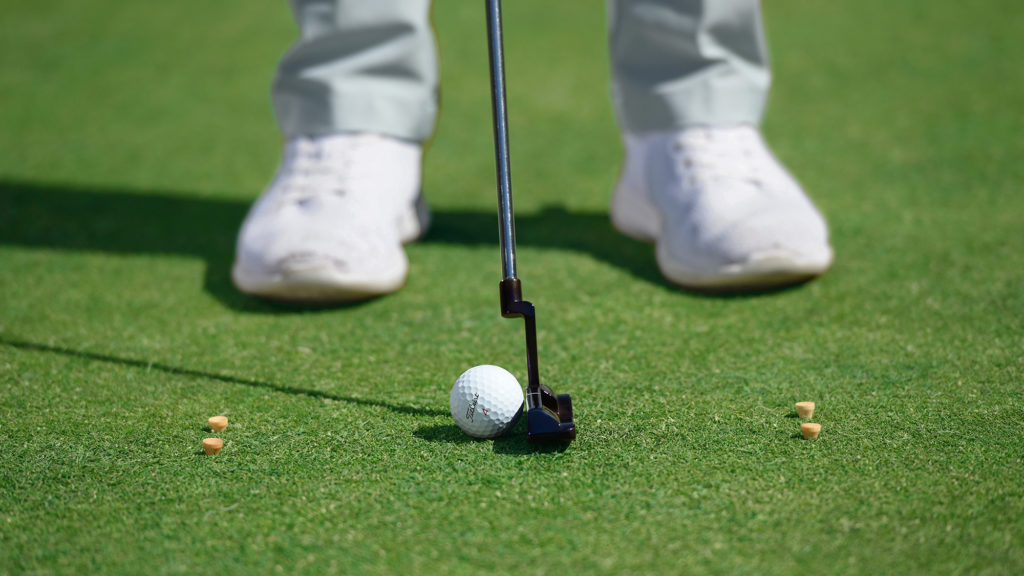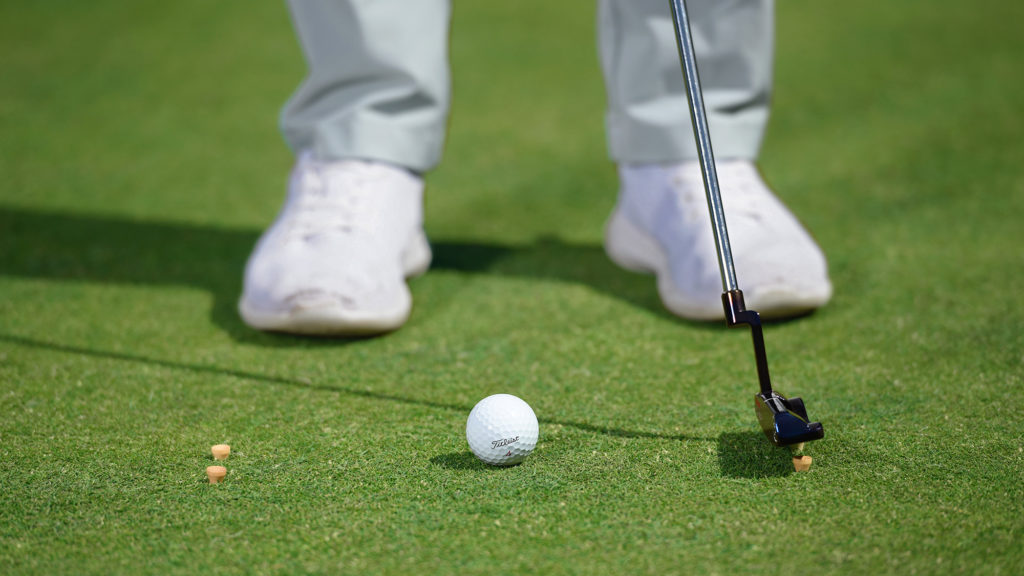Five common tips you should never use again
Whether you’re on the practice green or on the course, there’s a good chance someone has given you putting advice that might sound useful but is actually rooted in myth and will do more harm than good. Alarm bells should go off in your head any time you get a putting tip that disregards the three priorities: read, speed and direction. Here are five examples of things you often hear that aren’t helpful. Ignore them going forward and go with what I’m showing you here (yes, I’m a lefty), and you’ll start rolling it better than ever.
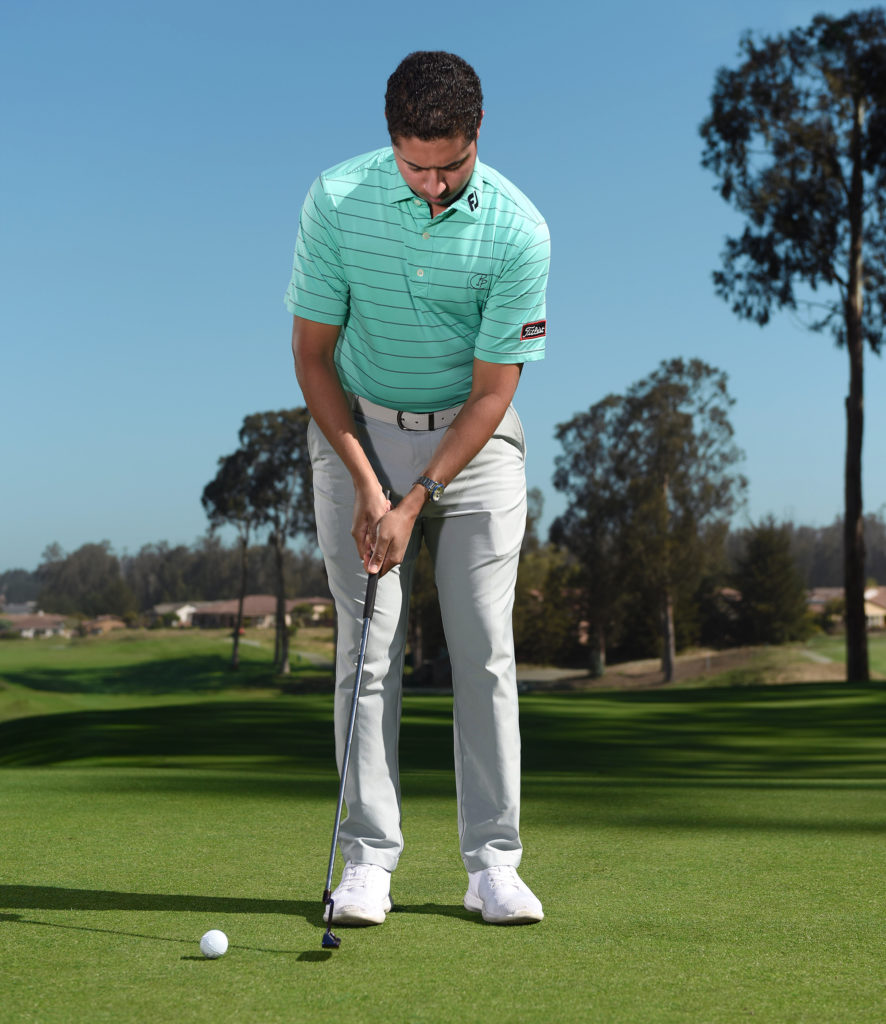
Myth #1
“Swing a triangle”
It’s likely that you’ve been told to create a triangular shape with your shoulders and arms when you hold a putter, and rock that shape back and through as one unit when you make your stroke. This well-intended advice, often given to improve consistency by making the stroke more repeatable, can feel unnatural and thus hinder speed control. It’s also misleading, because the forearm and upper arm are two segments, not one. Along with the shoulder girdle, these five body parts should create more of a pentagon look instead of a triangle.
A way to remember this is to visualise the look of baseball’s home plate between your shoulders and arms when you address and stroke a putt [left]. This is a more structurally sound setup that allows the arms to move more naturally. You’ll be able to manage speed much better.

Myth #2
“Get your eyes over the ball”
Setting up with your eyes directly above the ball is one tip many golfers think is a putting fundamental. Truth is, less than 20 percent of the tour players I’ve watched do it, so it’s far from essential. In fact, this setup can make your putting worse. When your sight line is over the ball, the tendency is to lean onto your toes [above]. With pressure too far forward at address, it’s easy to drift back onto your heels during the stroke to compensate, which increases the potential for a poor strike or to get the putt started on the wrong line – or both.
Instead of worrying about eye position, focus on balance – maintain pressure underneath the laces of your shoes [above]. To find this balance point, rock back and forth between your heels and toes until you feel centred. The goal is to find a comfortable, balanced stance that prevents excess movement, allowing you to strike every putt solid and get the ball rolling on your intended line.
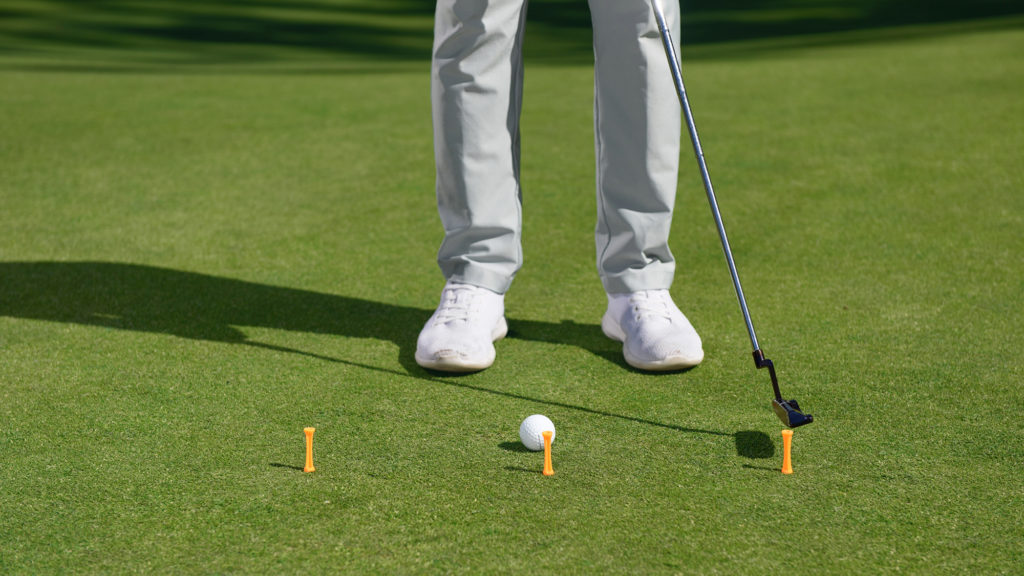
Myth #3
“Hit it harder”
You’re leaving a lot of putts short, so your matchplay partner, Captain Obvious, says to “just hit them harder!” Is that good advice? Think about your car merging onto a highway. With a short on-ramp, you must accelerate very quickly, making it more challenging to move into a lane at the cruising speed of the cars around you. You’ll probably have to adjust your speed to avoid a collision. On a longer ramp, your car can smoothly accelerate up to the speed of traffic and just blend in.
Managing putterhead speed is similar. Too much acceleration in a shorter stroke – taking the advice to hit it harder – will lead to inconsistent speed control. Instead, hit every putt at the same pace, simply making the stroke longer on both sides to regulate distance. Here, I’ve got a putting station with three tees in the ground [above]. I use them as visual reminders to make a stroke the same length back and through each time at the same moderate tempo. Adjusting the distance between the outer tees in this drill will help you get a feel for how far the ball rolls when you lengthen or shorten the stroke.
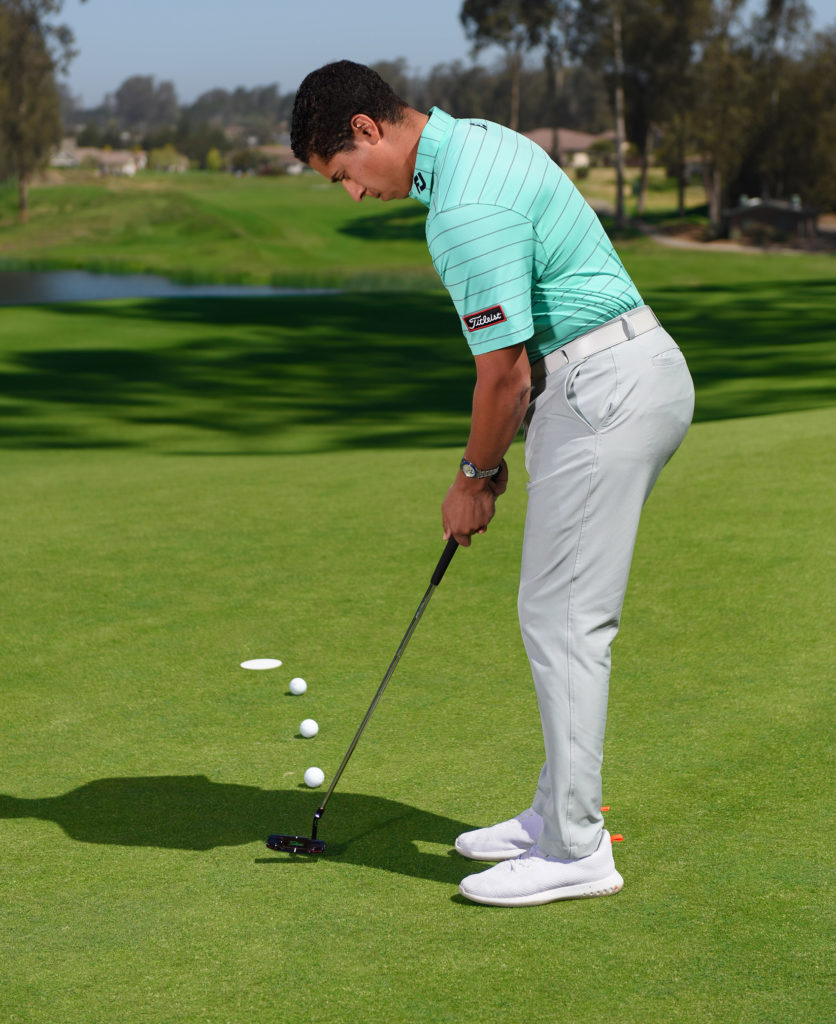
Myth #4
“Take the break out”
There’s a rampant myth that it’s better to ignore the break on a short putt and hit the ball hard enough that it goes straight in. When you take the break out by increasing how fast the ball is travelling as it approaches the cup, known as the capture speed, you also effectively shrink the size of the cup. Think about it – if you hit the putt dead centre, it will probably fall in. But if it reaches the cup left or right of centre, the chance of a lip-out increases significantly. Playing the break [above] and hitting your putts at the same moderate tempo will allow you maximise the size of the cup.
Myth #5
“Low and slow is the way to go”
If a player takes the putterhead back too slowly, it’s difficult to build the energy needed to get the ball to the hole without accelerating abruptly – the short highway-on-ramp analogy. If you try to keep the putterhead low to the ground for too long, you can’t maintain the home-plate structure of the arms and shoulder girdle I recommended instead of a triangular shape. The arms eventually have to straighten if the putterhead stays down, and if you don’t get some bend back in them before impact – which is tough to do consistently – you’ll likely mis-hit the putt.
To develop a better stroke, one that lets you maintain the home-plate structure of your arms and shoulders and make a smooth swing that contacts the ball solidly, push four tees into the ground surrounding a ball like I did here [above]. Practise making sure not to hit the tees with your putter in the backstroke or forward stroke. It should
pass just above them. (Bonus points if you roll the ball between the forward tees.) Get the start line right, and you’ll hole your putts
a lot more often.
Preston Combs is one of Golf Digest’s Best Young Teachers.
Photographs by J.D. Cuban

